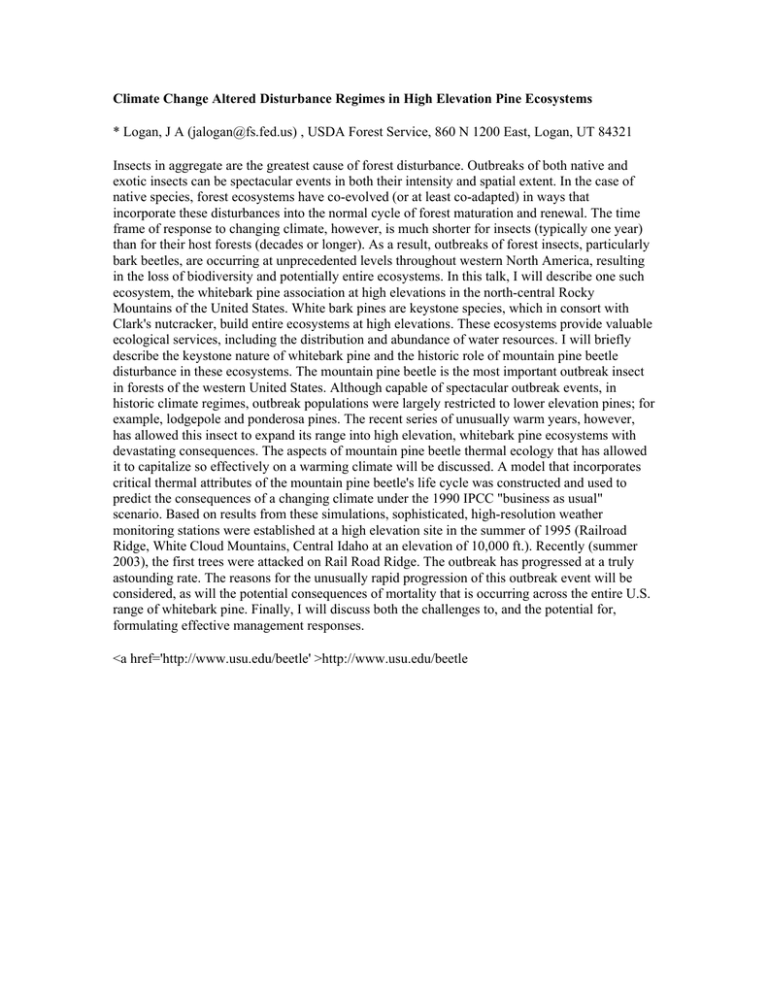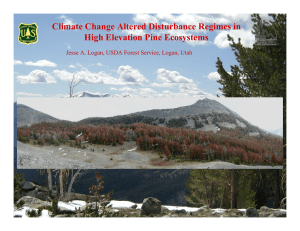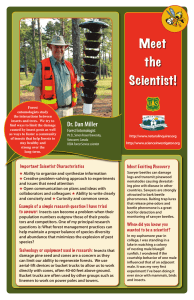Climate Change Altered Disturbance Regimes in High Elevation Pine Ecosystems
advertisement

Climate Change Altered Disturbance Regimes in High Elevation Pine Ecosystems * Logan, J A (jalogan@fs.fed.us) , USDA Forest Service, 860 N 1200 East, Logan, UT 84321 Insects in aggregate are the greatest cause of forest disturbance. Outbreaks of both native and exotic insects can be spectacular events in both their intensity and spatial extent. In the case of native species, forest ecosystems have co-evolved (or at least co-adapted) in ways that incorporate these disturbances into the normal cycle of forest maturation and renewal. The time frame of response to changing climate, however, is much shorter for insects (typically one year) than for their host forests (decades or longer). As a result, outbreaks of forest insects, particularly bark beetles, are occurring at unprecedented levels throughout western North America, resulting in the loss of biodiversity and potentially entire ecosystems. In this talk, I will describe one such ecosystem, the whitebark pine association at high elevations in the north-central Rocky Mountains of the United States. White bark pines are keystone species, which in consort with Clark's nutcracker, build entire ecosystems at high elevations. These ecosystems provide valuable ecological services, including the distribution and abundance of water resources. I will briefly describe the keystone nature of whitebark pine and the historic role of mountain pine beetle disturbance in these ecosystems. The mountain pine beetle is the most important outbreak insect in forests of the western United States. Although capable of spectacular outbreak events, in historic climate regimes, outbreak populations were largely restricted to lower elevation pines; for example, lodgepole and ponderosa pines. The recent series of unusually warm years, however, has allowed this insect to expand its range into high elevation, whitebark pine ecosystems with devastating consequences. The aspects of mountain pine beetle thermal ecology that has allowed it to capitalize so effectively on a warming climate will be discussed. A model that incorporates critical thermal attributes of the mountain pine beetle's life cycle was constructed and used to predict the consequences of a changing climate under the 1990 IPCC "business as usual" scenario. Based on results from these simulations, sophisticated, high-resolution weather monitoring stations were established at a high elevation site in the summer of 1995 (Railroad Ridge, White Cloud Mountains, Central Idaho at an elevation of 10,000 ft.). Recently (summer 2003), the first trees were attacked on Rail Road Ridge. The outbreak has progressed at a truly astounding rate. The reasons for the unusually rapid progression of this outbreak event will be considered, as will the potential consequences of mortality that is occurring across the entire U.S. range of whitebark pine. Finally, I will discuss both the challenges to, and the potential for, formulating effective management responses. <a href='http://www.usu.edu/beetle' >http://www.usu.edu/beetle






